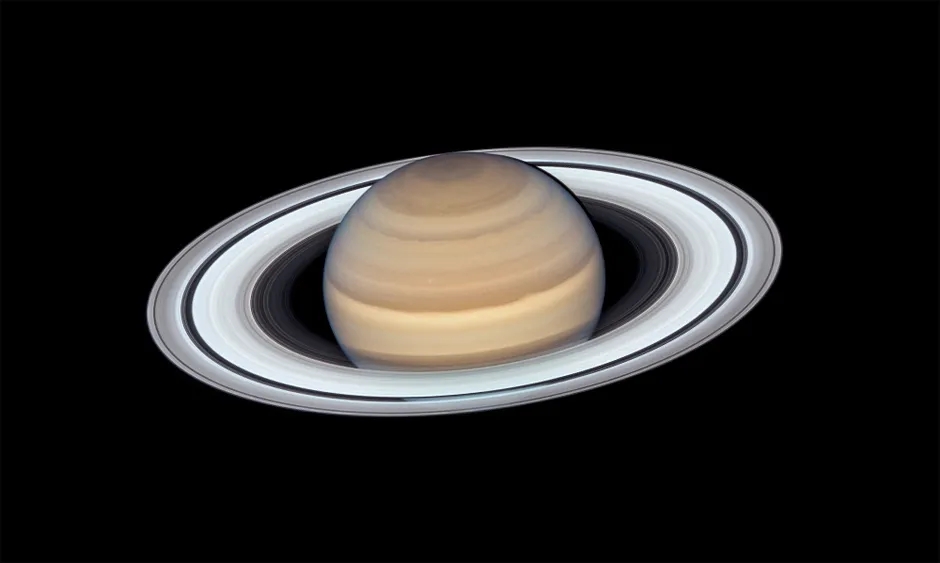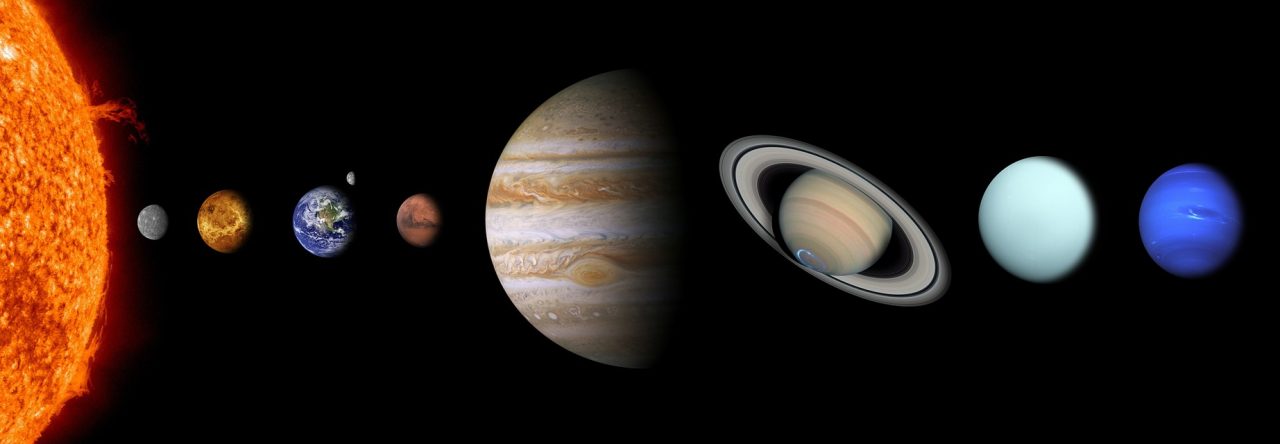The cost of living crisis is rampaging around the planet, celebrity rappers are on the run, Associate Education Ministers want to send sick children to school, Israel and Russia need a time-out, rainbow pedestrian crossings are now dangerous, and the former most powerful person in the world is now selling bibles for US$59.99 to pay legal bills. What a mess.
I wonder if there is a blog out there that can heal the divisions in our societies, and bring people to the negotiation table. If you’re looking for that blog, then you need to keep on looking, because you won’t find it here.
What you will find is an appalling awkward attempt at astronomical alliteration, because the worst tour in all of science is back! Some Geek Told Me’s Tour of the Solar System is here once again, but be warned, a statement about the Tour from The New Zealand Sour Cream and Chives Preservation Society said:
“The so-called Tour of the Solar System is an embarrassment to all science-loving people, but especially to the hard-working people of New Zealand. The author needs to be arrested and charged with gross negligence towards New Zealand’s scientific community. He’s a moron.”
If I didn’t know any better, I’m starting to think that The New Zealand Sour Cream and Chives Preservation Society are getting a little personal, don’t you?
Anyway, if you’re lucky enough to have dodged the last 12 stops, well…you’re in for a shock. The 12 stops of the Tour of the Solar System are as follows:
1.) Meet the Family
2.) The Sun
4.) Mercury
5.) Venus
7.) The Moon
8.) Mars
10.) Ceres
11.) Jupiter
12.) The Galilean moons
Since you’re a person who eats carrots and goes to bed before midnight, you would have guessed that this tour stop is all about Saturn, so let’s stop gasbagging and get on with it.

Ask any number of people to name their favourite planet, and the chances are it’s going to be Earth, Vulcan, or Saturn. The main reason people like Saturn is because it’s so gorgeous, but just like the mysterious hot person at the party, there is a lot more to them than just their looks.
Saturn is the sixth planet from the Sun and the second of the gas giants or Outer Planets. If Saturn needed to purchase some alcohol, its ID would show that they are about 4.6 billion years old, which still makes it slightly older than the terrestrial planets or Inner Planets.
Continuing along the good ideas of naming planets after deities from Roman Mythology, Saturn was the god of wealth and agriculture. His Ancient Greek equivalent was Cronus, the father of Zeus (Jupiter).
Being a gas giant, Saturn is massive. It’s the second largest planet in the Solar System, obviously following Jupiter, though Saturn is still smaller than the Sun.
It has a diameter of 120,536 km, which compared to Earth, means that Saturn could fit 700 Earths inside it. You’ve heard of the very old saying, “Inside every gas giant, an Earth is trying to break out.” In Saturn’s case, it’s 699 more. Saturn also has 95 times the mass of Earth, and that’s even without the help of a personal trainer.
The eight siblings of the Solar System share many things in common with each other, and having an elliptical orbit is one of them. Saturn’s perihelion is about 1.35255 billion km, and its aphelion is 1.51450 billion km. Another way to look at it is Saturn’s average distance from our local star is 1.4 billion km, with 9.68 km/s being its orbital speed.
And speaking of speed, Saturn has the second-shortest day in the solar system. 10.7 hours is the time it takes Saturn to rotate once, with Saturn taking 29.4 Earth years or 10,756 Earth days to complete one orbit of the Sun. What were you doing 29.4 years ago? The world was watching Heat, Twelve Monkeys, and Sense and Sensibility, along with the biggest movie of December 1994 and of all time, Cutthroat Island.
We’ve finally arrived at the point of the blog, that would make the Mandarin jealous: the rings. Saturn is famous for its rings because they are so obvious and beautiful; like a bowl of Salt and Vinegar chips at a pub. This ring system is one of the most complicated in the Solar System and was first discovered by our old mate, Galileo Galilei in 1610 CE.
There are eight main rings, some smaller rings, along with some gaps. Some of the rings and gaps have some amazing and original names like A, B, C, and D, as well as names like Pallene Ring and the Roche Division.
The rings are made up of different materials like ice, rock, and dust of various sizes; numbering in their billions. As for the origin of the rings, it’s believed they are from broken pieces of moons, asteroids, or comets, that have been ripped apart by Saturn’s gravity.
Another idea is that cryovolcanoes from one of Saturn’s moons are also helping to create and maintain the rings. Their age is believed to be about 400 million years old, and it’s interesting to note that each of the rings orbits Saturn at a different speed.
Saturn is like a sibling that’s an annoying overachiever because it also has another claim to fame; it has 146 recognised moons, making it the planet with the most moons in the Solar System. That’s more moons than Trump has court cases! There are some truly fascinating moons like Titan, Rhea, Iapetus, Dione, Tethys, Enceladus, and Mimas, along with hundreds of others.
I’m not spending too much time talking about these moons today because I’m going to discuss them next time on the Tour. In saying that, scientists believe life could exist on several of Saturn’s moons, so let’s watch this space, shall we?
Just like how Sour Cream and Chives is similar to Demon’s Arse Breath, Saturn is similar to Jupiter in certain areas. Because Saturn is a gas giant like Jupiter, it doesn’t have a true surface. Saturn’s atmospheric pressure is over 1000 times the atmospheric pressure on Earth’s surface. The pressure is so strong, it can squeeze gas into a liquid.
To put it another way, the further down into Saturn’s atmosphere you go, the stronger the pressure becomes, so if you were on board a spacecraft, you’ve purchased a one-way ticket.
And speaking of Saturn’s atmosphere, it consists of about 75% hydrogen and 25% helium, the two main elements in Jupiter and the Sun. Saturn also has trace amounts of water ice, propane, acetylene, phosphine, ammonia, ethane, and methane.
Here’s another fun fact about Saturn; it has an average density that’s less than water. This means if it was ever possible to build one larger enough, Saturn could float in a bathtub of water.
The weather on Saturn makes it another reason it’s an overachiever. The cloud formations come in faint stripes, jet streams, and storms. Within the upper atmosphere, winds can reach 500 m per second, and compared this with Earth, where hurricane winds can reach 110 m per second.
At Saturn’s north pole, there is a crazy thing happening. There’s a hexagon-shaped pattern, which is a six-sided jet stream. After observations from Voyager 1 and Cassini, the hexagon was measured to be 30,000 km across, with winds reaching 322 km per hour. To me, that’s Ludicrous Speed, and I’m sure Dark Helmet would agree.
There are so many more amazing things I would love to discuss about Saturn, but I’m out of time. I’ve been distracted by world events and the fact that I need more sleep. However, I’m going to leave you with this; although Saturn’s magnetic field is not as large as Jupiter’s, it’s still 578 times more powerful than Earth’s. Sucks to be us, I guess.
And with that, this week’s rant has finished. What is your favourite fact about Saturn? As always, please let me know. I hope you’re enjoying the Tour because, with inflation, it’s still pretty affordable. Terrible, but still affordable.
Thanks once again for reading, following, and subscribing to Some Geek Told Me. I’m also on Twitter/X and Mastodon, spitting out useless daily information.
Please don’t forget to walk your dog, read a banned book, keep pushing for a ceasefire in Palestine, check out the Solar eclipse, and I’ll see you next week.
Because of its size, Jupiter has the largest and strongest magnetic field of any planet in the Solar System, however, the Sun’s magnetic field is stronger. Jupiter’s magnetic field is 16-54 times stronger than Earth’s, and it extends 1-3 million km, in the direction of the Sun, as well as 1 billion km towards Saturn. This works out to about 7-21 times Jupiter’s diameter; which is larger than Rishi Sunak’s ego.
In addition to this, Jupiter acts as a bodyguard for the rest of the Solar System. Jupiter’s gravity well is so massive, that it attracts and diverts comets and asteroids into the Jovian System. This accounts for the extremely high rate of impacts in the Jovian System, and some scientists speculate, that this is why life on Earth has survived, because Jupiter keeps taking bullets for us.
Well, that’s it for another week. What’s your favourite fact about Jupiter? As always, please let me know. Some Geek Told Me’s Tour of the Solar System will return next month, so please keep your tickets, as there are no refunds.





























You must be logged in to post a comment.